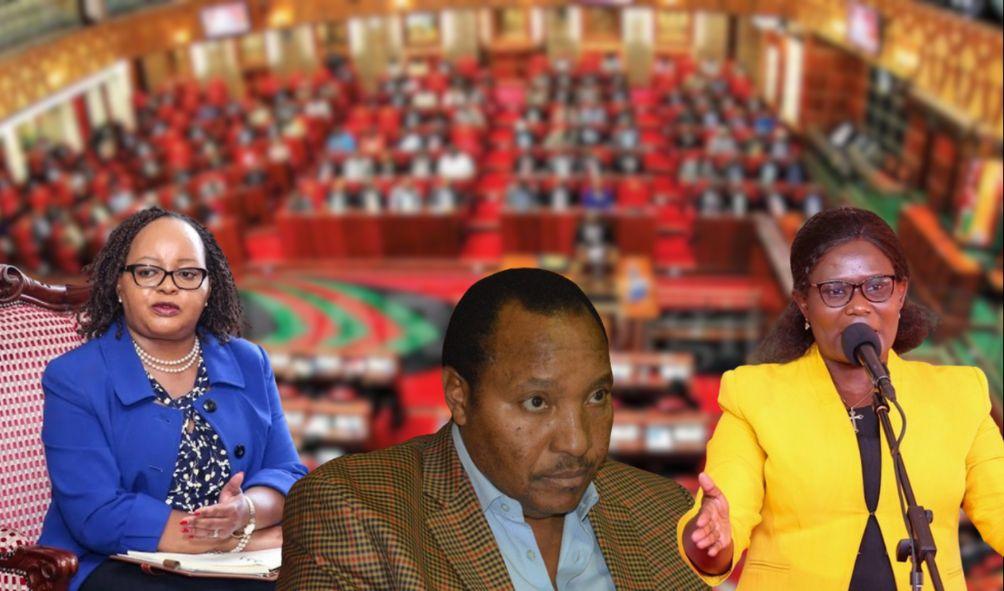Mt Kenya’s Love Affair with Impeaching Governors: A Deep Dive into Political Turmoil and Instability
The impeachment trial of Meru Governor Kawira Mwangaza, her third within less than two years, highlights the Mt Kenya region’s reputation as the most politically unstable area in the country.
Data on impeachment motions against governors reveals that Mt Kenya has seen the highest number of such attempts since devolution began in 2013.
The larger Mt Kenya region, comprising 10 counties, has also experienced the highest turnover of governors since 2013.
For instance, Kiambu County has had its fourth governor, Mr. Kimani Wamatangi, following James Nyoro, Ferdinand Waititu, and William Kabogo.
In the 2017 General Election, most of the original governors were ousted, with exceptions being Murang’a’s Mwangi Wa Iria and Embu’s Martin Wambora.
This contrasts sharply with other regions where many governors have served two full terms.
Since 2013, 11 governors and three deputy governors have faced impeachment by MCAs, but only Mike Sonko of Nairobi, Mr. Waititu of Kiambu, and Kisii Deputy Governor Robert Monda were removed from office, while the others were protected by the Senate and the courts.
ALSO READ:
- Under and Over 7 — when the rules are simple, but the emotions are intense
- CAF Trophy Hunt: Win iPhone, MacBook, PlayStation, and other prizes in 1xBet promo!
- Rigathi Gachagua Responds to Raila Odinga’s Claim That He Can’t Fix Kenya’s Problems
- Miguna Miguna Criticizes New IEBC Chair Erastus Ethekon, Calls Him a Ruto Ally- ‘Not Independent’
- Matiang’i: No Scores to Settle, I Just Want to Fix My Country
MCAs have attempted to impeach Ms. Mwangaza three times, along with Mr. Wa Iria, Mr. Granton Samboja (former Taita Taveta governor), Kirinyaga Governor Anne Waiguru, Mr. Paul Chepkwony (former Kericho governor), and former Nyeri Governor Nderitu Gachagua, but the Senate intervened to save them.
Mr. Wambora and former Wajir Governor Mohamed Abdi were also removed and their ouster was confirmed by the Senate but were reinstated after winning court cases.
In 2014, Mr. Wambora was the first governor to face impeachment, being removed a record four times that year.
Although initially ousted by the Embu MCAs in February 2014, the High Court halted the process.
In April, MCAs impeached him again, but this resolution was upheld by 40 senators.
However, the Court of Appeal later nullified the impeachment due to insufficient evidence of constitutional violations, allowing him to continue as governor.
Siaya Deputy Governor William Oduol and former Machakos Deputy Governor Bernard Muia Kiala also faced impeachment but were protected by the Senate. Mr. Monda was not as fortunate, as the Senate upheld his removal.
The impeachment process for governors is governed by the County Governments Act, which cites gross constitutional violations, abuse of office, or misconduct as grounds for removal.
ALSO READ: Police Insider: Court’s Plainclothes Protest Ban ‘Unenforceable’
Ms. Waiguru recognized that impeachments are a valid means of holding officials accountable but suggested that many are driven by political motives.
She argued that such political motivations are especially prevalent during governors’ first terms, where removal attempts can be used to hinder their development efforts and prospects for re-election.
She also noted that conflicts can arise between governors and county assemblies over budget and project management, leading to impeachment motions based more on political conflicts than actual evidence.
Waiguru attributed the concentration of impeachments in the Mt Kenya region to its volatile politics and the absence of a dominant political figure.
She explained that this “free-for-all” environment can foster instability and divert focus from development.
Mr. Waititu, impeached in June 2020, attributed the frequent impeachment motions in Mt Kenya to external forces manipulating MCAs for political gain, specifically citing the Kieleweke and Tangatanga factions led by former President Uhuru Kenyatta and his then-deputy William Ruto, respectively.
ALSO READ: Mung Beans Bill 2022: Kenyans Face KSh 1m Fine, Imprisonment for Growing Ndengu without Licence
Former Laikipia Governor Ndiritu Muriithi described the region and its electorate as highly restless, suggesting that the high turnover of leaders reflects a population that remains constantly alert and dissatisfied.
He noted that out of the governors elected in 2017, only two, Ms. Waiguru and Tharaka Nithi’s Muthomi Njuki, were re-elected in 2022.
Former Makueni Governor Kivutha Kibwana, who survived an impeachment attempt due to a court injunction, said that factors such as politics and relationships between governors and MCAs drive these cases, though some instances involve genuine incompetence.
Prof. Kibwana suggested that to reduce the frequency of impeachment cases, the law should limit the number of impeachments per term and require that motions can only be introduced after governors have served at least two years.
He proposed that greater voter involvement be included in the process.
Machakos Deputy Governor Francis Mwangangi attributed the high rate of impeachments to the lack of inclusion of MCAs in county governance and called for broad consultation with stakeholders to improve program execution.
He recommended setting a higher threshold for impeachment to prevent political manipulation.
Political commentator Mark Bichachi attributed the high incidence of impeachments in Kenya to political or financial motivations, with powerful figures seeking to remove governors they oppose and MCAs acting out of dissatisfaction.
He noted that Mt Kenya’s political instability contributes to the frequent impeachment cases in the region.
Mt Kenya’s Love Affair with Impeaching Governors: A Deep Dive into Political Turmoil and Instability
